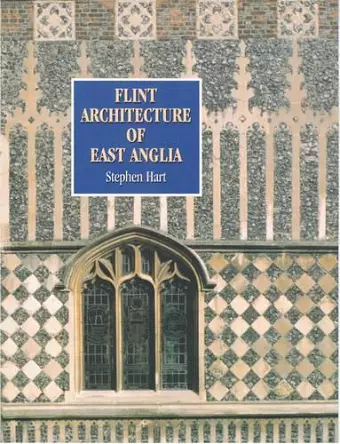Flint Architecture of East Anglia
Format:Paperback
Publisher:Giles de la Mare Publishers
Should be back in stock very soon

East Anglia has a unique and very substantial heritage of flint-built churches and secular buildings over a wide area that range from Saxon times to the 20th century, many of them of exceptional beauty, and most in a good state of preservation. Stephen Hart considers that these buildings, in which a large number of different flintwork techniques and designs are used that are partly functional, partly dependent upon local materials and partly aesthetic in inspiration, constitute an important part of our heritage. It has only been scantily treated in previous works. His book is the first comprehensive one to be written on English flint architecture and is likely to become the definitive work on the subject. He shows that, although some of these techniques and designs are also to be found in other chalkland regions of England, including Hampshire, Sussex (e.g. Goodwood House), Kent, Wiltshire and Dorset, the greatest variety is in East Anglia. He has devised a classification system based on analysis of the materials and workmanship in flintwork which distinguishes between different types of flint, including flint combined with brick and stone. The numerous colour plates and black and white photographs convey the fascinating multiplicity of styles to be found, some of them reminiscent of the work of contemporary artists like Richard Long, and the virtuoso skills of the craftsmen who created them. There is a deeper consciousness and wider appreciation of vernacular architecture today in Britain than there has ever been, and the book could well inspire people to explore new possibilities in the use of flint architecture. Apart from its general appeal, it is a book that will strike a particular chord among architects, designers, craftsmen, local historians, artists and regional councils responsible for planning and conservation.
'...[a] truly wonderful book...delightful and imaginative, as well as scholarly, comprehensive and useful...' Norman Scarfe, author of Faber Shell Guide to Suffolk 'This important and comprehensive book...is a richly rewarding [one] to read and study. To those unfamiliar with flint architecture, the discovery of the subtlety and sophistication of the techniques and designs of the flint tradition will be a revelation...The depth of the author's study, research and knowledge of flint is very impressive and the book is destined to become a standard work on the subject.' Building Design
ISBN: 9781900357180
Dimensions: unknown
Weight: 593g
160 pages